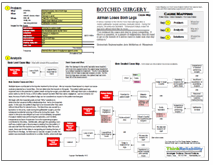By Kim Smiley
A new study has determined that it may be possible to develop a blood test to diagnose depression in teens. Finding better ways to treat depressed teens is important because untreated depressed teens are at higher risk for substance abuse, social difficulties, physical illness and suicide. Teens are particularly at risk from depression because this is an age when depression frequently hits and teens can be difficult to properly diagnose and treat.
Currently, the process to diagnose depression is subjective and relies on a patient’s ability to identify and describe symptoms, something that is typically more difficult for teens. Depressed teens are even more likely to struggle with steps needed to receive treatment for depressions. Teens are also typically more worried about others opinions than adults and the fear of judgment from their peers may prevent depressed teens from seeking treatment.
An objective blood test would help simplify the process of diagnosing teens with depression and should help more depressed teens receive appropriate treatment. A straight forward test, like a test for blood sugar or for cholesterol, should also help remove any remaining social stigma of depression treatment so hopefully more affected individuals would seek treatment.
 In this study, experimental blood tests were done looking for genetic markers that had been identified in earlier studies using rats. Eleven genetic markers were found that were tied to depression. The researchers were also able to identify which participants had major depression and which suffered from major depression with anxiety. The hope is that a blood test could eventually be used not only to diagnosis depression, but also to differentiate between subtypes of depression, information that would certainly be useful when determining the best course of treatment for patients.
In this study, experimental blood tests were done looking for genetic markers that had been identified in earlier studies using rats. Eleven genetic markers were found that were tied to depression. The researchers were also able to identify which participants had major depression and which suffered from major depression with anxiety. The hope is that a blood test could eventually be used not only to diagnosis depression, but also to differentiate between subtypes of depression, information that would certainly be useful when determining the best course of treatment for patients.
Significantly more work is needed to develop an effective blood test, but this early study hints that it could be possible to create an objective test for depression. This study used a limited number of subjects, 28 teens between 15 and 19 years old, so larger studies will be needed in the future.
This issue can be analyzed by building a Cause Map, a visual root cause analysis. To view the Cause Map, click on “Download PDF” above.








